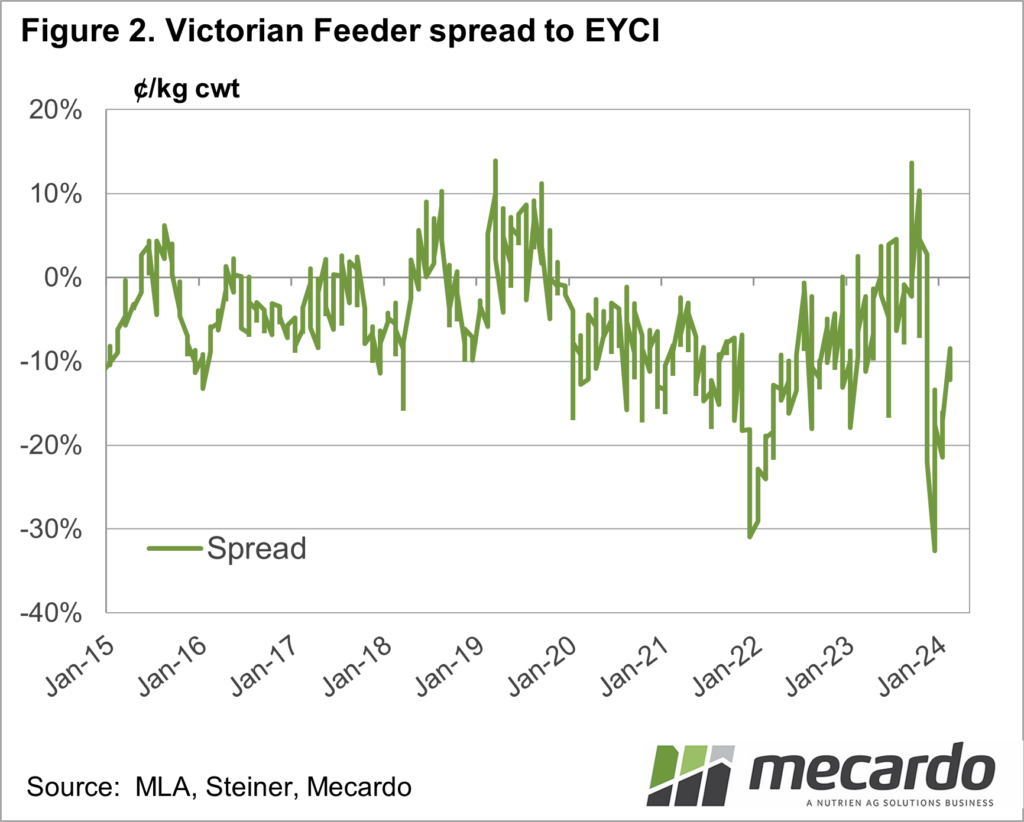Cattle prices don’t always move in the same direction every week, but over the long haul, there are plenty of reasons why different cattle categories in different locations trend up and down together over time. This week we’ll look at geographical price spreads, which are creating opportunities for some.
Summer has
finally kicked in the South. After a dry,
late spring, December and January saw consistent wet weather that kept pastures
growing, and cattle on farm. The start
of February has seen more traditional summer weather, and things have dried out
quickly.
In contrast
widespread rains through Queensland have boosted summer growth, and as such
demand for mouths to convert the grass into money.
January
cattle sales showed an upward trend across most categories, with the Eastern Young
Cattle Indicator (EYCI) starting February at a nine-month high. Cattle prices have risen across the board,
but since November we have seen somewhat of a diversion of values.
Figure 1
shows the Meat and Livestock Australia Feeder Steer Indicators, along with the
EYCI. When cattle were really in the
doldrums, the Queensland, NSW and Victorian Feeder Steer Indicators sat
together with the EYCI at 200¢/kg lwt.
The pre-Christmas
price rally was led by northern states, with Victoria following along. The premium in the north has held throughout
January and February, and last week Victorian prices stalled, while northern
values continued forging ahead.
We can see
that the northern Feeder Steer Indicators and the EYCI have gained 150-170¢/kg
lwt since November. The Victorian Feeder
Steer Indicator has gained 120¢, with a significant spread opening up. For a 400kg steer the price difference is $160/head.
Looking at store
cattle prices, the spreads are similar, with cattle in the south significantly
cheaper than those in the north.
Figure 2
shows the Victorian Feeder Steer spread to the EYCI. Over the past ten years, Victorian
Feeders have generally traded at a discount to the EYCI, usually less than 10%.
The rampant restocker demand from 2020-2022 pushed the discount lower, but we
can see it recovered in 2023.
There are
times in most years when Victorian prices equal the EYCI, whether that be
through Victorian Feeders increasing, or the EYCI falling.
What does it mean?
Tracking spreads in markets gives a very quick and easy indication of value. Young cattle in the south are currently good value. The theory is that prices will improve relative to their northern counterparts, either due to a rise in saleyard pricing or remaining steady while northern prices fall.
This just means that price risk is lesser in the south than it is in the north, and there is more upside potential.
Have any questions or comments?
Key Points
- Good summer rains in the north are supporting prices.
- The southern summer has hit and dry conditions are seeing stronger supply and weaker demand.
- Young cattle look like better value in the south than in the north at the moment.
Click on figure to expand
Click on figure to expand
Data sources: MLA, Mecardo














